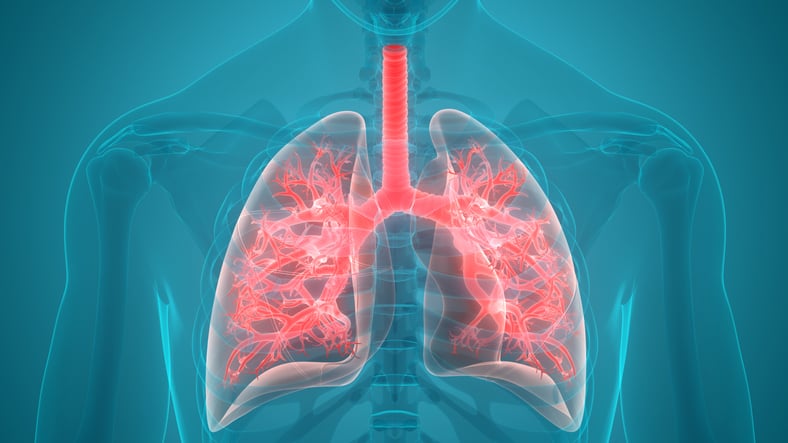Cryptococcus is one of the major fungal pathogens infecting the lungs. Pulmonary cryptococcal infection is generally considered a community-acquired condition caused by inhalation of dust contaminated with fungal cells from the environment. Here, we report a case developing pulmonary cryptococcosis 3 months after hospital admission, which has rarely been reported before.
A 73-year-old female patient who was previously immunocompetent experienced persistent dry cough for 2 weeks, 3 months after admission. Chest computed tomography (CT) showed a new solitary pulmonary nodule developed in the upper lobe of the left lung. Staining and culture of expectorated sputum smears were negative for bacteria, acid-fast bacilli, or fungus. The patient then underwent biopsy of the lesion. Histopathology findings and a positive serum cryptococcal antigen titer (1:8) indicated pulmonary cryptococcosis. Daily intravenous 400 mg fluconazole was administered initially followed by oral fluconazole therapy. Follow-up chest CT after 3 months of antifungal therapy showed complete disappearance of the pulmonary nodule. Respiratory symptoms of the patient also resolved. A complete investigation excluded the possibility of a patient-to-patient transmission or primarily acquiring the infection from the hospital environment. Based on the patient’s history of exposure to pigeons before admission and recent steroid and azathioprine use after admission for the treatment of myasthenic crisis, reactivation of a latent pulmonary cryptococcal infection acquired before admission, in this case, is impressed.
Although rarely reported, pulmonary cryptococcal infection should be included in the differential diagnosis of hospitalized patients with respiratory symptoms, especially in those with predisposing risk factors. Chest image studies and further surgical biopsy are needed for confirmation.
An unusual case of reactivated latent pulmonary cryptococcal infection in a patient after short-term steroid and azathioprine therapy: a case report.


